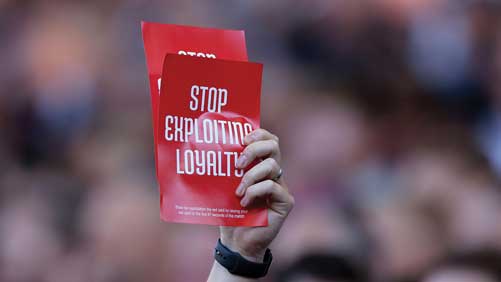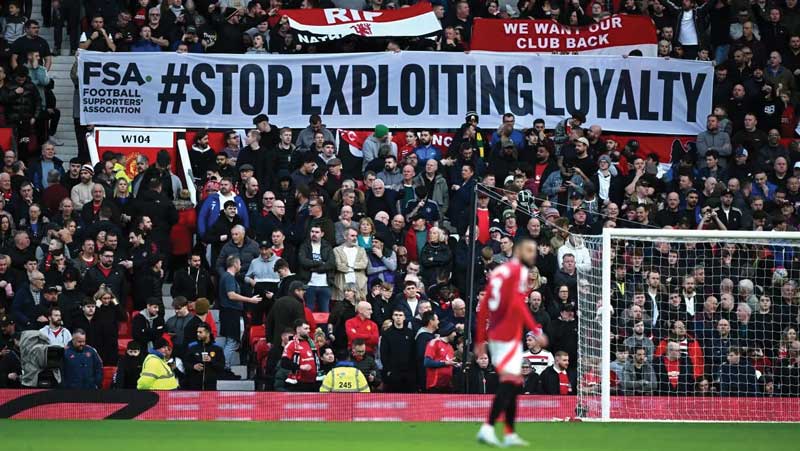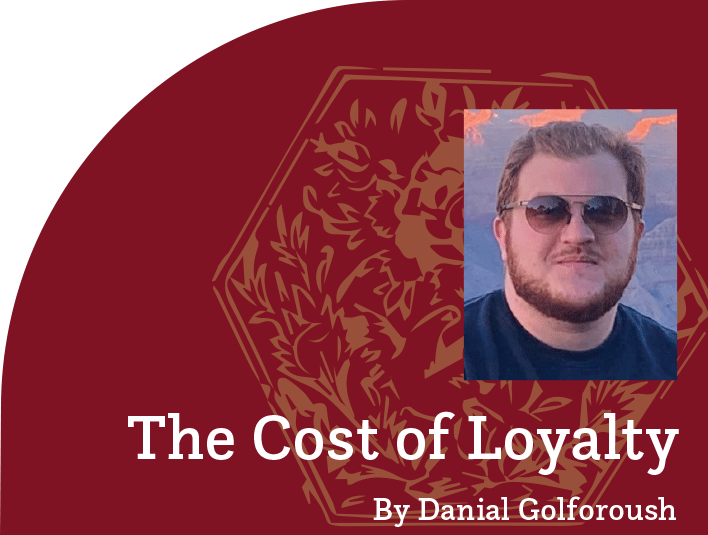The Cost of Loyalty: A Look at the Premier League Ticket Affordability Crisis
By Danial Golforoush
 Introduction: The Financial Tug-of-War in Football
Introduction: The Financial Tug-of-War in Football
Football is often hailed as “the people’s game,” but the current trajectory of the Premier League tells a different story. Rooted in fragile financial infrastructure, the sport has become an insatiable black hole of spending. Clubs are under constant pressure to fund exorbitant player wages, record-breaking transfer fees, and state-of-the-art facilities.
Fans want their clubs to be competitive in the transfer market and boast world-class stadiums. Yet, many supporters view themselves not as customers, but as loyal backers of their teams, often unwilling or unable to shoulder the growing financial burden. Complicating this is the economic reality: local fans contribute less to a club’s bottom line compared to visiting or tourist supporters, who spend significantly more—not only at the stadium, but also in the surrounding areas.
For fans, the situation feels exploitative, particularly during a cost-of-living crisis. Recent weeks have seen protests at clubs like Tottenham Hotspur, Manchester City, and Fulham, where supporters accuse management of leveraging their loyalty to justify higher prices.
The clash reflects a broader identity crisis in football: is it a community-driven sport or a profit-driven entertainment product? As clubs push for higher revenue, supporters find themselves at odds with the commercialization of their beloved game.
What’s Happening Now: The Rise of Dynamic Pricing and “Americanization”
Premier League clubs are increasingly adopting dynamic ticket pricing models—a trend heavily influenced by American ownership and private equity-backed groups. These entities, including the likes of Manchester United’s co-owner Sir Jim Ratcliffe and others like Arsenal, Liverpool, and Chelsea, are reshaping the fan experience to maximize revenue.
Traditionally, clubs were more attuned to fan concerns, prioritizing affordable access to matches. However, the influence of U.S.-style sports management is shifting priorities. In American sports, the matchday experience is not just about the game, but about creating a full entertainment package.

As Sir Jim Ratcliffe recently explained:
“The future of football is not going to be you just go to a football match, you leave and you go home. The future—which they recognize at the Bernabeu and the Nou Camp—is that you provide more entertainment, it’s more of a campus. You have a bite to eat, you watch something on the screens, you do a bit of shopping.
If people, instead of spending two quid on a burger at half-time, stay there for a couple of hours and spend £15, it’s a win-win. The fans benefit because there’s stuff to do. The club benefits because they can buy better players.”*
This vision of increased “dwell time” in stadiums underscores a growing tension. Clubs are no longer just selling tickets; they are monetizing every minute of a fan’s presence. Yet, the average Premier League supporter is wary of this shift, particularly as ticket prices rise alongside this commercial transformation.
Fans vs. Clubs: Rising Tensions
This shift comes at a time when half of the Premier League’s clubs are partially or wholly owned by American entities, whose focus on revenue generation over fan loyalty has alienated traditional supporters. Fans, already grappling with a cost-of-living crisis, feel they are being priced out of the very game they built.
Protests have erupted across clubs, including Tottenham Hotspur, Manchester City, Fulham, and Manchester United, where the anger is particularly acute. United’s decision to hike ticket prices midseason—eliminating youth and senior concessions—drew chants of “66 quid, you’re taking the piss!”
Supporters’ groups, like the Manchester United Supporters Trust (MUST), have condemned these moves, calling them a betrayal of fans. MUST’s recent letter to the club CEO described the midseason price hike as a “step backward,” highlighting increases as high as 164% for youth tickets.
The Football Supporters Association (FSA), leading the charge with campaigns like #StopExploitingLoyalty, underscores the broader issue: clubs are prioritizing immediate financial gains over long-term sustainability.
The Broken System: Debt and Mismanagement
The unsustainable business model of football exacerbates these tensions. Despite record revenues, many clubs remain mired in debt, operating at financial deficits that reflect systemic mismanagement. Manchester United, for example, reported record revenues of £662 million last year, but simultaneously declared a net loss of $148 million.
For many clubs, these financial woes stem not from a lack of income, but from excessive spending—a point echoed by the FSA. Whether it’s astronomical wages or speculative transfer fees, football’s “spending problem” has pushed clubs into a precarious position, with fans now bearing the brunt of these financial shortcomings.
Conclusion: The Beautiful Game at a Crossroads
The Premier League faces a critical decision: how to reconcile financial sustainability with the loyalty of its core supporters. While modern commercial strategies promise revenue growth, they risk alienating the local fans who have long been the backbone of the sport.
For supporters, rising ticket prices and growing commercialization threaten to turn the beautiful game into an exclusive product accessible only to the wealthiest. This identity crisis—between football as a community-driven sport and a profit-driven entertainment business—is at the heart of the growing unrest.
The protests, uniting fans across rival clubs, highlight the depth of this frustration. Whether clubs respond meaningfully remains to be seen, but one thing is certain: football’s future depends on finding a balance between its modern business model and the traditions that made it the world’s game.
If clubs fail to address the systemic issues and continue to lean on fans to cover their financial mismanagement, they risk pushing the very people who give football its soul out of the stadiums entirely.
* “Premier League Ticket Prices Are Rising–But How Do They Compare,” The New York Times, April 12, 2024.


















